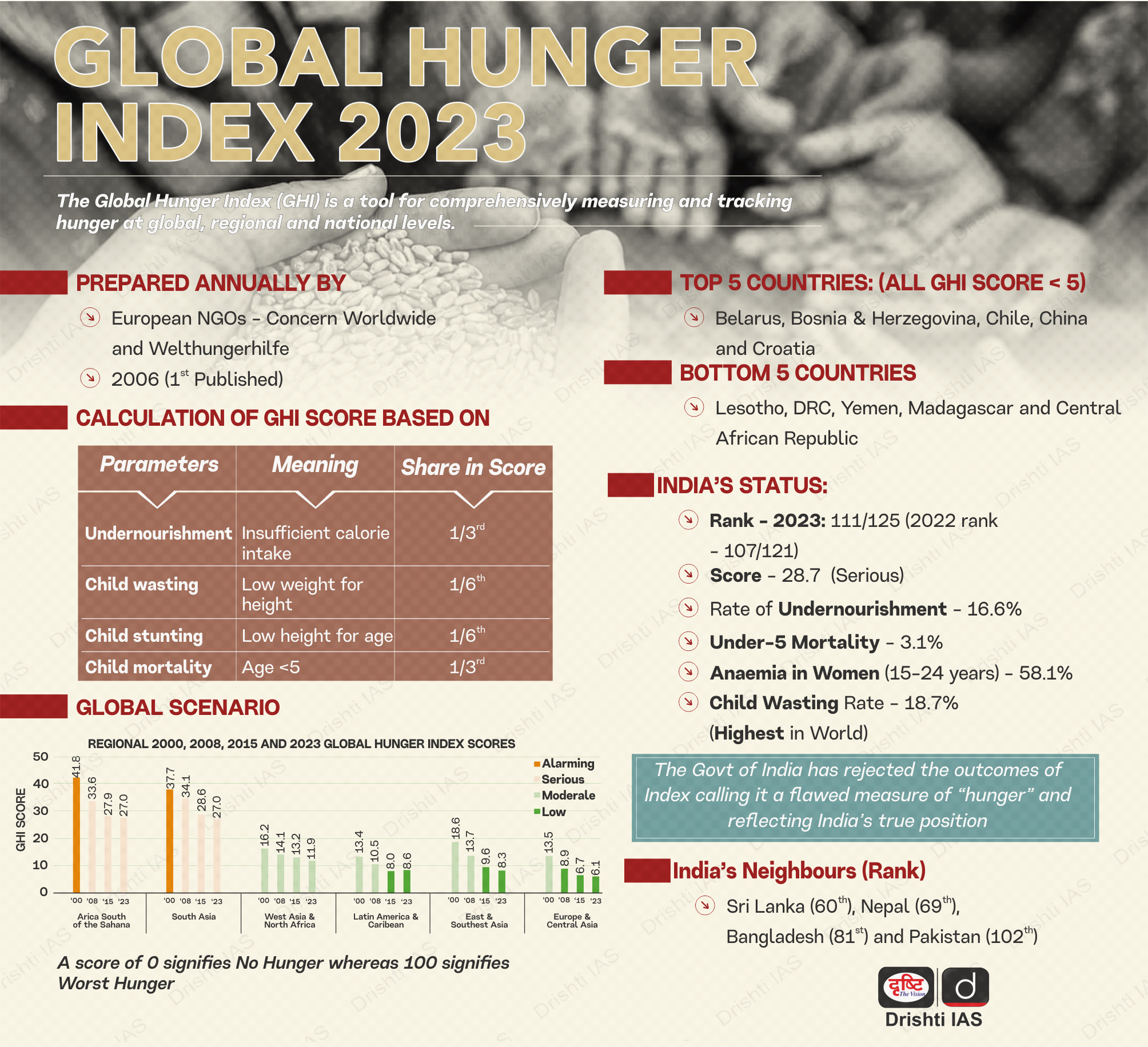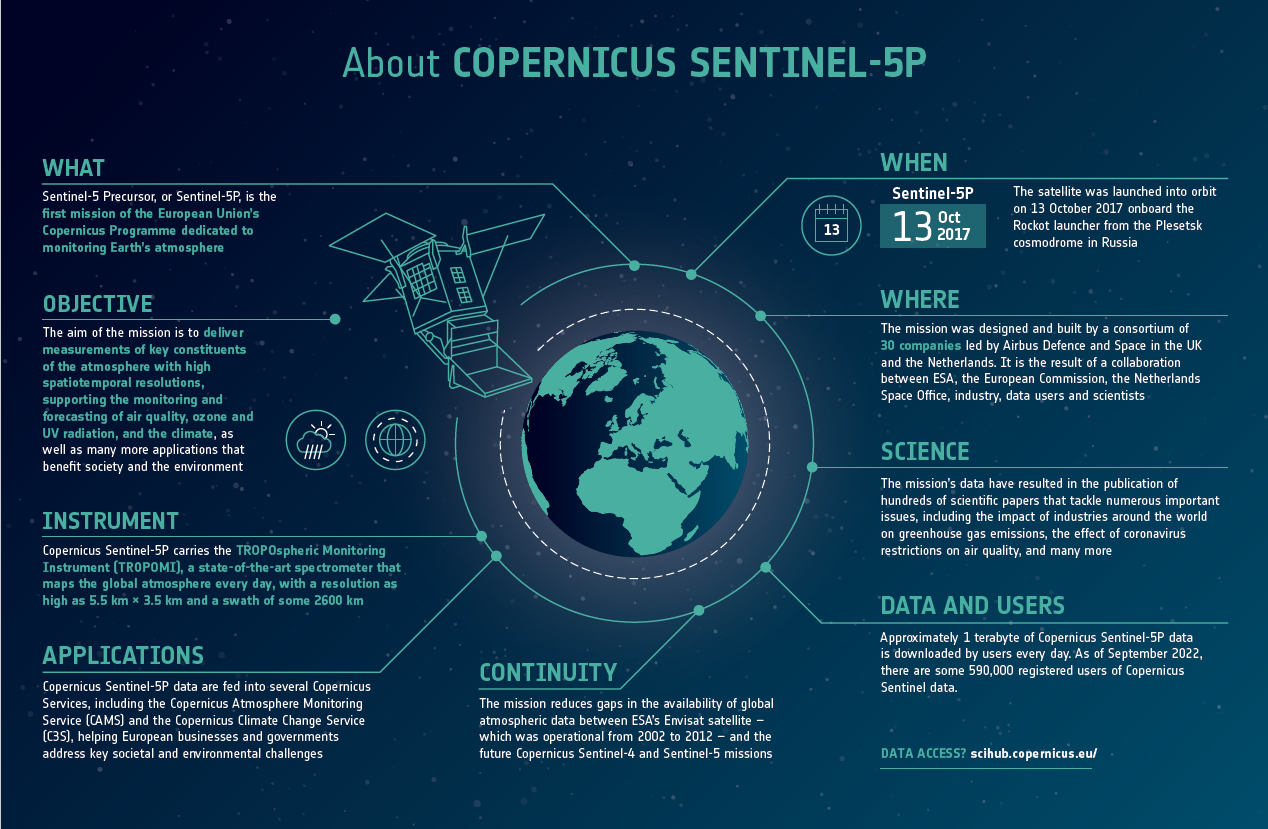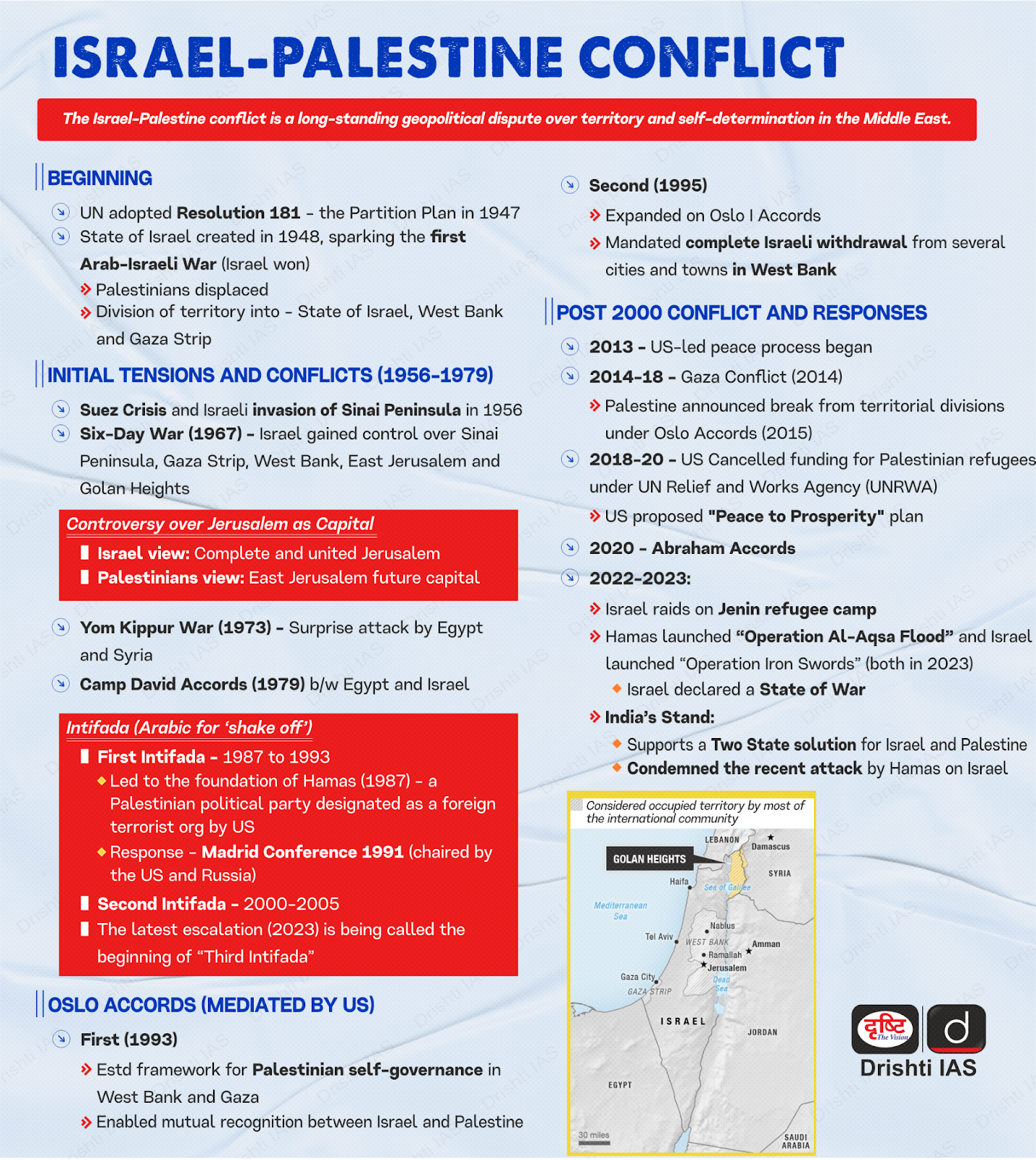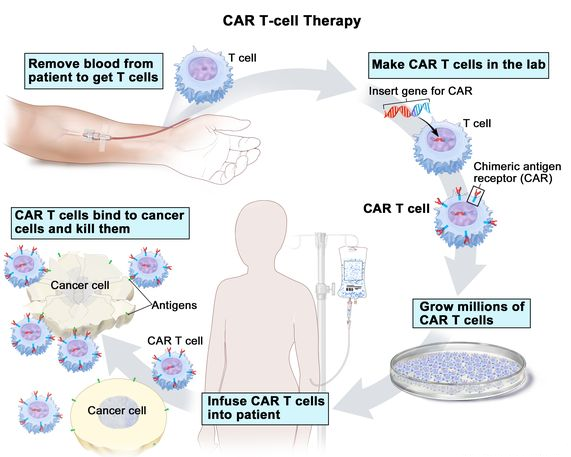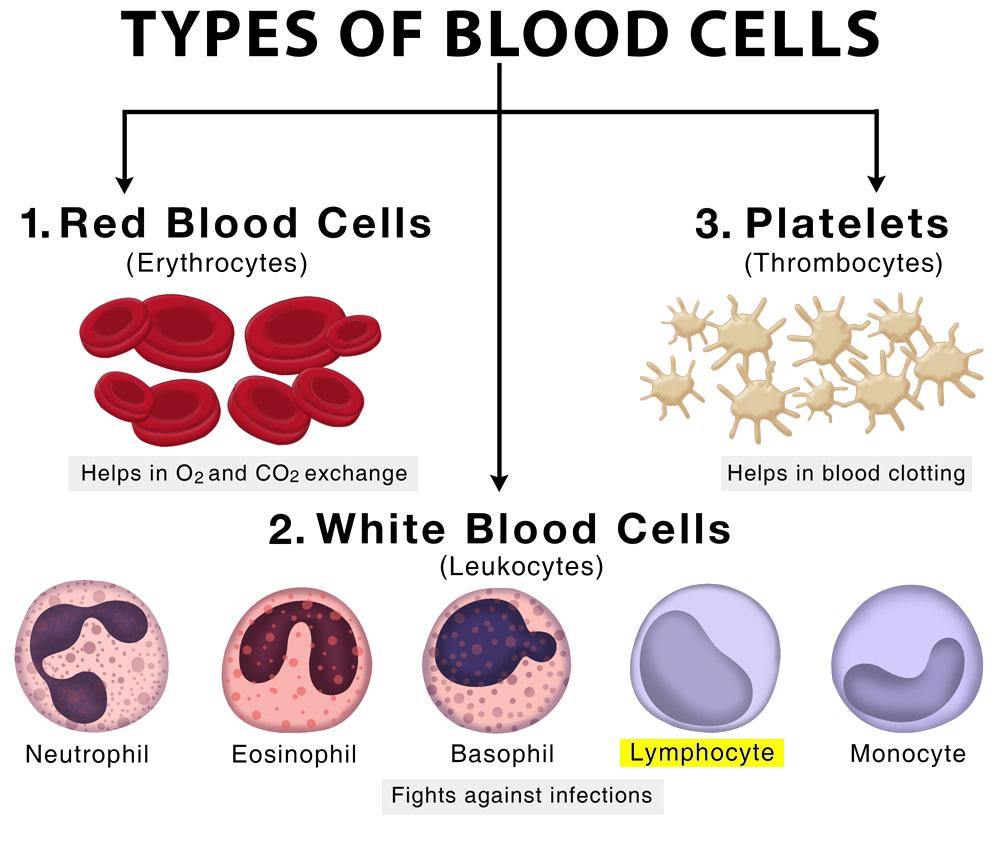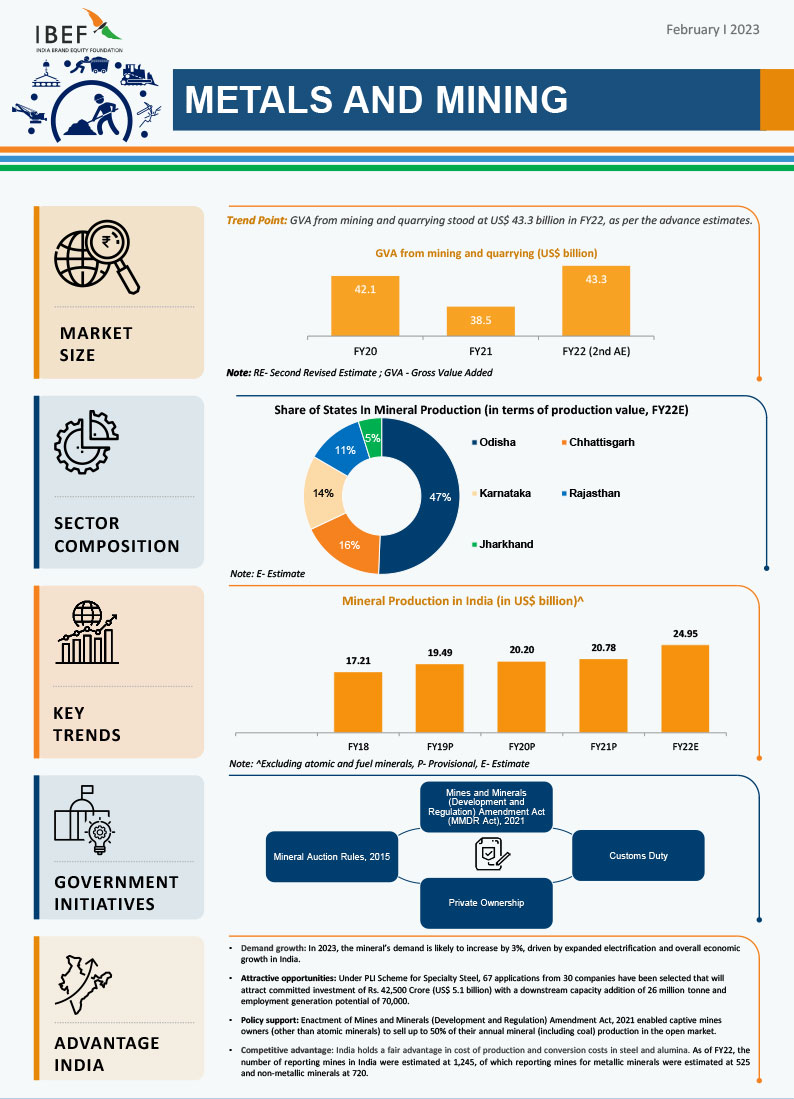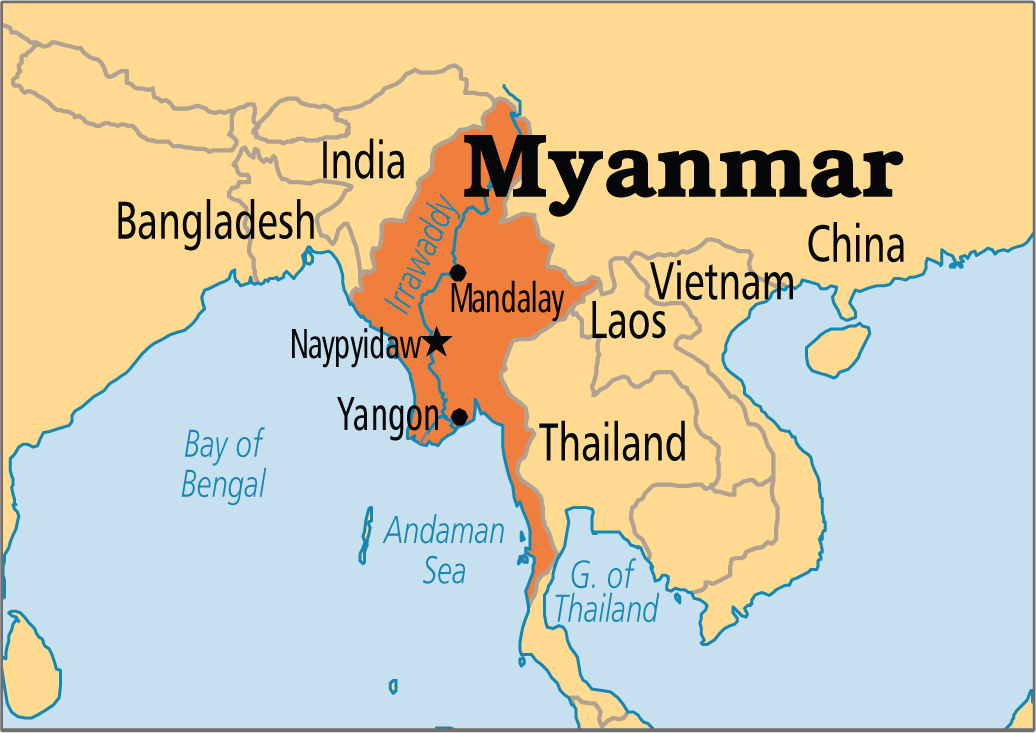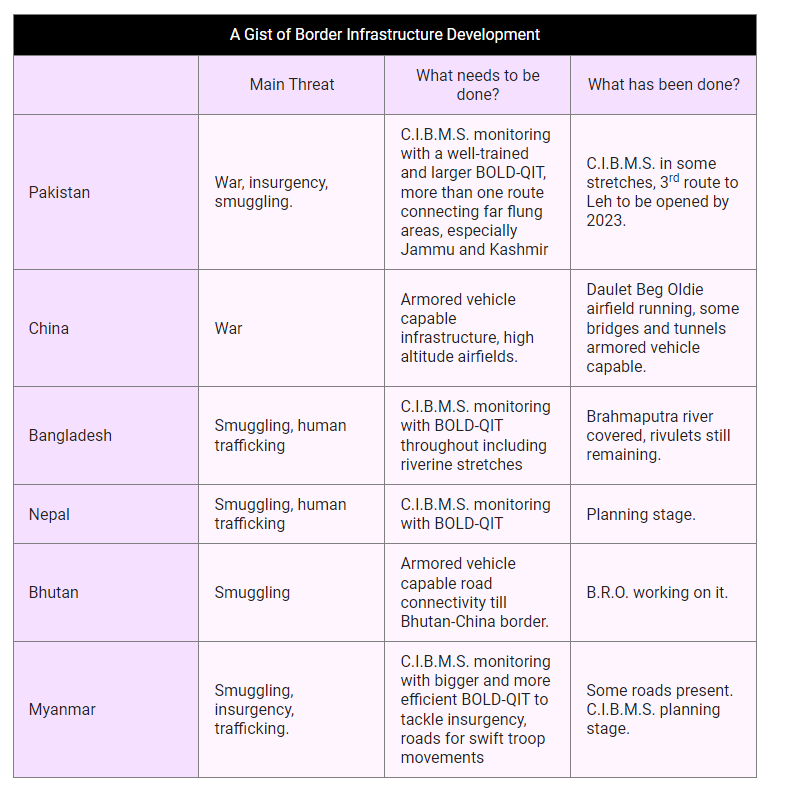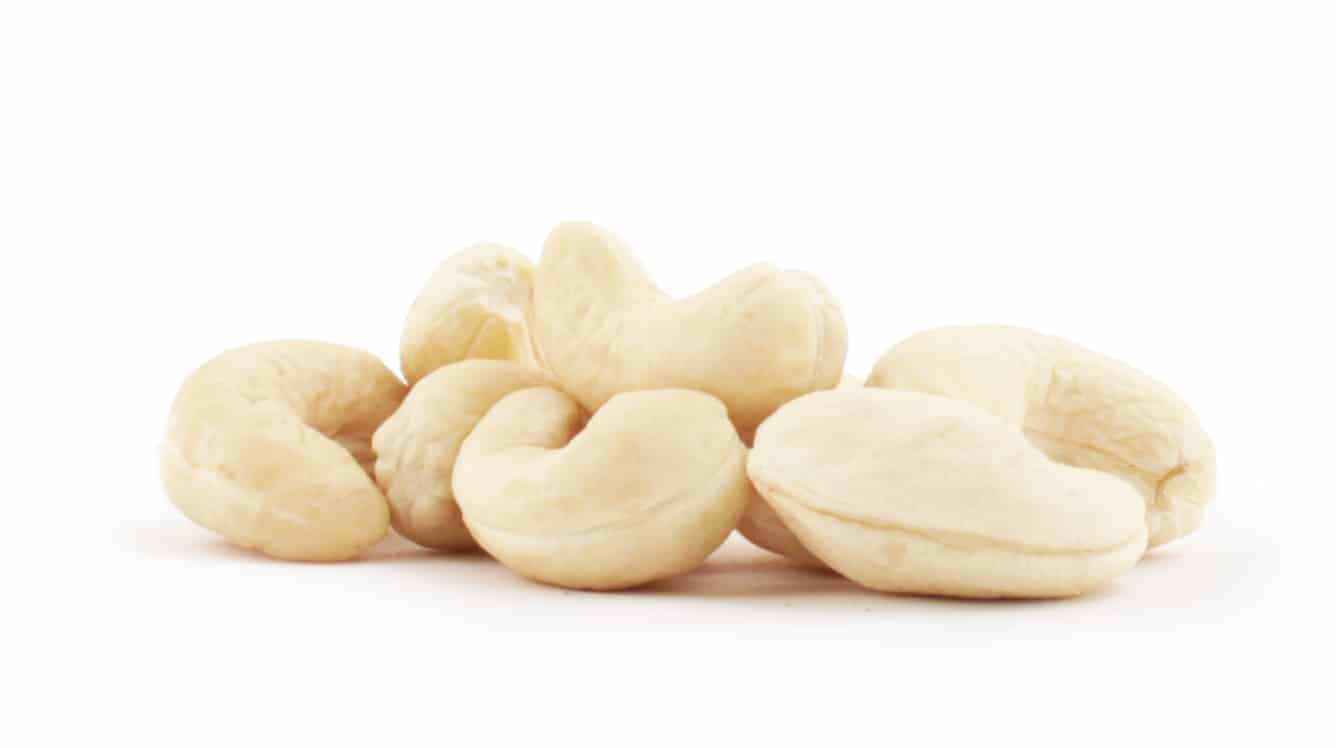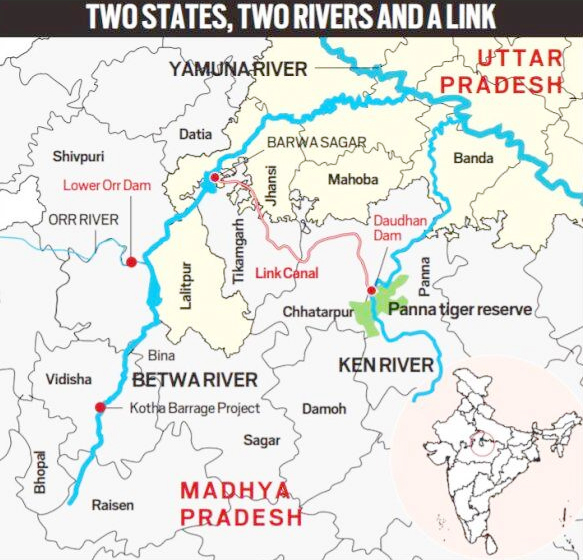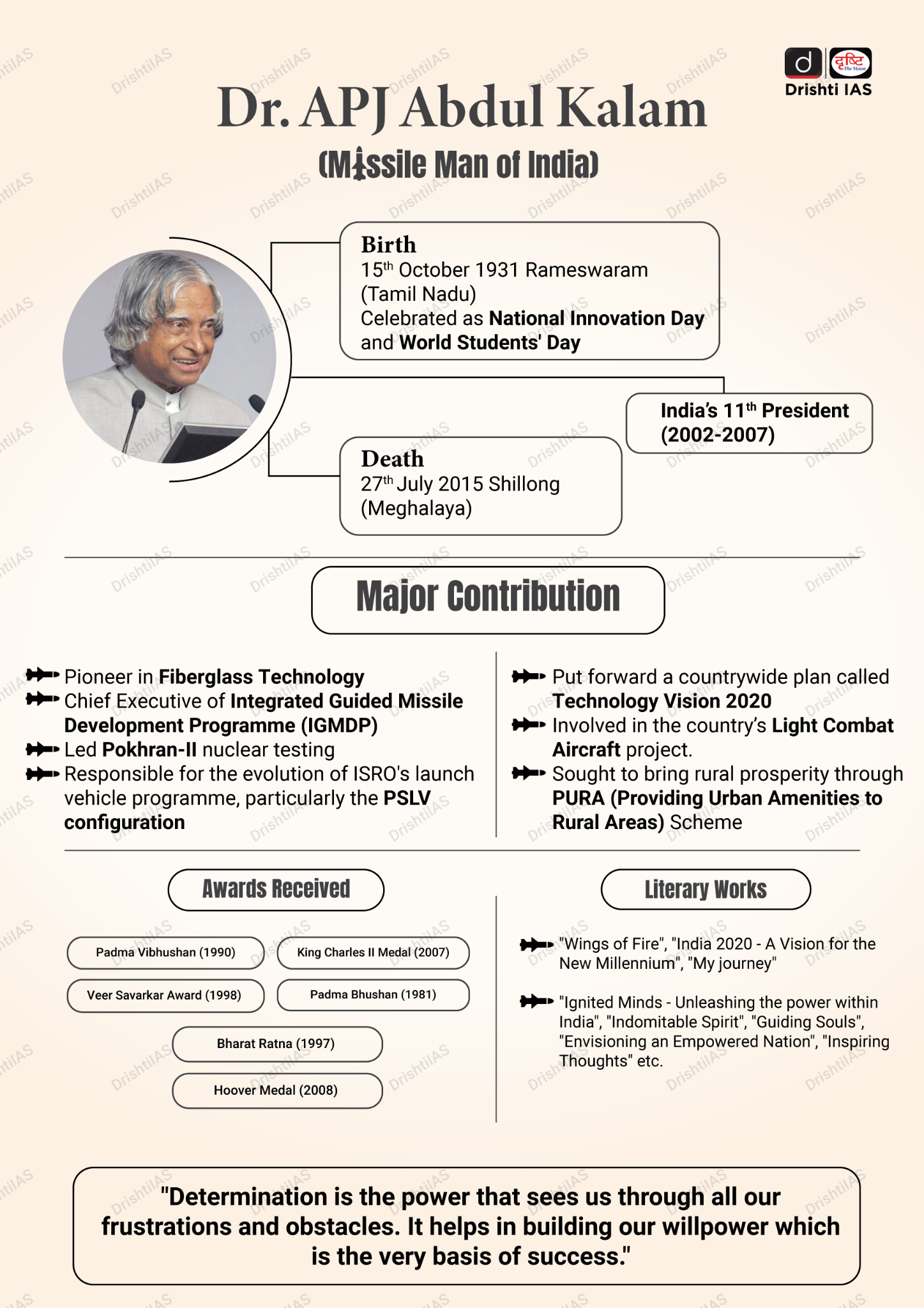Infographics
Biodiversity & Environment
Large Ozone Hole Detected Over Antarctica
For Prelims: Ozone hole, Volcanic eruptions in Tonga, Greenhouse gas effect, Montreal Protocol, World Ozone Day
For Mains: Mechanism Behind Ozone Hole, Ozone Holes and Climate Change.
Why in News?
Satellite measurements over Antarctica have revealed a massive ozone hole, or "ozone-depleted area," stirring concerns. The European Space Agency's Copernicus Sentinel-5P satellite captured this significant anomaly.
- While it is not likely to exacerbate warming on the surface of Antarctica, this phenomenon raises questions about its causes and potential ties to climate change.
What is the Ozone Layer?
- The ozone layer, found in the stratosphere (good ozone), acts as a protective gas shield that absorbs harmful ultraviolet (UV) radiation, safeguarding us from the adverse effects of excessive UV exposure.
- Skin cancer rates are significantly influenced by UV radiation, underscoring the importance of preserving the ozone layer.
What is an Ozone Hole?
- About:
- An ozone hole is a region of the stratosphere over Antarctica where the ozone layer is exceptionally depleted.
- The ozone hole is not technically a “hole” where no ozone is present. Scientists use the word hole as a metaphor for the area in which ozone concentrations drop below the historical threshold of 220 Dobson Units.
- The size of the ozone hole over Antarctica varies from year to year, typically opening in August and closing by November or December.
- This annual fluctuation is driven by unique climatic conditions over the region.
- An ozone hole is a region of the stratosphere over Antarctica where the ozone layer is exceptionally depleted.
- Mechanism Behind Ozone Hole:
- The opening of the ozone hole is a result of the Earth's rotation, which generates specific winds over the enclosed landmass of Antarctica.
- The polar vortex, a band of strong winds around the poles, plays a vital role in ozone hole dynamics.
- During winter, polar vortex forms due to temperature differences and acts as a protective barrier, keeping polar air separate from warmer, lower-latitude air.
- This isolation creates a cold environment for polar stratospheric clouds (PSCs), which trigger ozone-depleting reactions.
- The chemical reactions that occur on the surface of PSCs are responsible for the activation of chlorine and bromine compounds. These compounds, particularly chlorine, are catalysts in ozone-depleting reactions. When exposed to sunlight, they trigger the breakdown of ozone molecules.
- This isolation creates a cold environment for polar stratospheric clouds (PSCs), which trigger ozone-depleting reactions.
- The size and strength of the polar vortex directly impact ozone depletion. When it weakens in spring, mixing with warmer air from lower latitudes gradually closes the ozone hole, replenishing the ozone layer.
- The opening of the ozone hole is a result of the Earth's rotation, which generates specific winds over the enclosed landmass of Antarctica.
- Cause of the Ozone Hole in 2023:
- Scientists suspect that the substantial ozone hole observed in 2023 may be attributed to volcanic eruptions in Tonga during December 2022 and January 2023.
- Unlike conventional volcanic eruptions, which generally release gasses confined to the lower atmosphere, this eruption propelled a significant amount of water vapor into the stratosphere.
- This water vapor, in addition to other ozone-depleting elements like bromine and iodine, impacted the ozone layer through chemical reactions, altering its heating rate.
Note
- While the Antarctic ozone hole in 2023 is likely linked to a natural event, it's essential to acknowledge that in the 1970s, human activities, specifically the widespread use of chemicals called chlorofluorocarbons (CFCs), were responsible for significant ozone depletion.
- The use of these gasses as propellants in aerosol cans released chlorine into the stratosphere, contributing to ozone depletion.
- Ozone Holes and Climate Change:
- Ozone depletion is not considered a primary driver of global climate change. However, there are indications that rising global temperatures may influence the behavior of ozone holes.
- Recent instances of significant ozone holes have been linked to climate change, particularly the occurrence of wildfires.
- The increased frequency and intensity of wildfires, often fueled by climate change, inject more smoke into the stratosphere, potentially contributing to further ozone depletion.
- While ozone holes may have a cooling effect, reducing the greenhouse gas effect, (the loss of ozone means slightly more heat can escape into space from that region), they can also alter the progression of seasons, leading to prolonged wintertime conditions.
Note
- In response to the ozone depletion crisis, the international community recognized the need for action, leading to the Vienna Convention in 1985 and the subsequent Montreal Protocol in 1987.
- World Ozone Day(16th of September) is observed every year to commemorate the signing of the Montreal Protocol.
What is Copernicus Sentinel 5P Satellite?
UPSC Civil Services Examination, Previous Year Question (PYQ)
Q1. Which one of the following is associated with the issue of control and phasing out of the use of ozone depleting substances? (2015)
(a) Bretton Woods Conference
(b) Montreal Protocol
(c) Kyoto Protocol
(d) Nagoya Protocol
Ans: (b)
Q2. Consider the following statements: (2012)
Chlorofluorocarbons, known as ozone-depleting substances, are used
- in the production of plastic foams
- in the production of tubeless tyres
- in cleaning certain electronic components
- as pressurizing agents in aerosol cans
Which of the statements given above is/are correct?
(a) 1, 2 and 3 only
(b) 4 only
(c) 1, 3 and 4 only
(d) 1, 2, 3 and 4
Ans: (c)

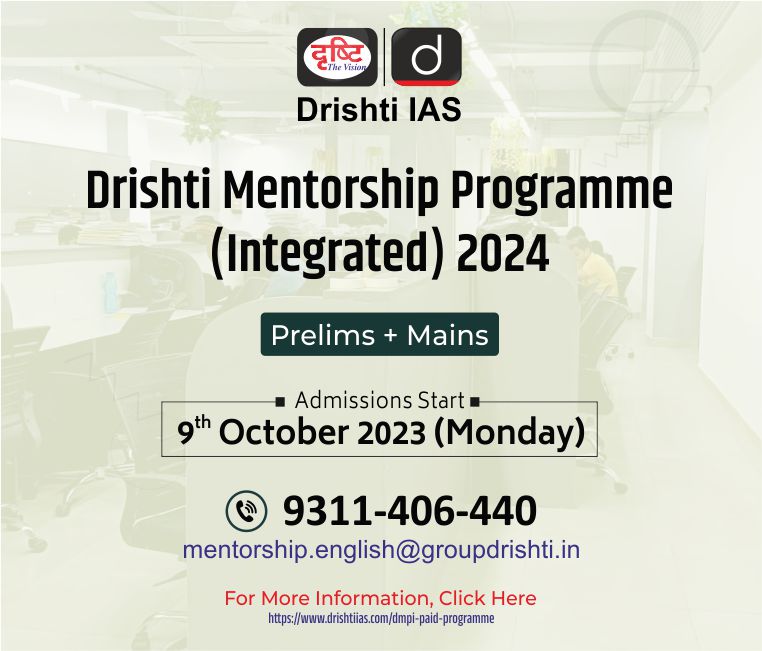
International Relations
Gandhi's Stance on Jewish Nation-State in Palestine
For Prelims: Mahatma Gandhi, Israel-Palestine Conflict, Balfour Declaration
For Mains: Effect of Policies & Politics of Countries on India's Interests, India’s stand and Solution to the Israel-Palestine conflict
Why in News?
The opposition of Mahatma Gandhi to a Jewish nation-state in Palestine has gained renewed attention because of ongoing conflict and tensions between Israel and Palestine.
Why did Gandhi Oppose a Jewish Nation-State in Palestine?
- The Plight of the Jewish People in Europe:
- In the 1930s and 1940s, the Jewish people in Europe faced extreme persecution and discrimination, particularly under the Nazi regime led by Adolf Hitler.
- The Nazis systematically implemented the Holocaust, resulting in the tragic loss of approximately six million Jewish lives, along with numerous other atrocities such as concentration camps, and mass deportations.
- In the 1930s and 1940s, the Jewish people in Europe faced extreme persecution and discrimination, particularly under the Nazi regime led by Adolf Hitler.
- Gandhi's Sympathy for the Jewish People:
- Gandhi had immense sympathy for the Jewish people who had been historically persecuted for their religion.
- He drew parallels between the treatment of Jews in Europe and that of untouchables in India, emphasizing the inhumane treatment meted out to both communities.
- Gandhi was deeply concerned about the German persecution of Jews and believed that even a war with Germany would be justified to prevent such persecution.
- Gandhi had immense sympathy for the Jewish people who had been historically persecuted for their religion.
- The Zionist Movement and Its Goals:
- The Zionist movement emerged in the late 19th century, with a goal to establish a national homeland for Jewish people in Palestine.
- Its momentum increased significantly after World War I, encouraged by the Balfour Declaration of 1917, which expressed support for a Jewish national home in Palestine.
- After World War II, in 1947, the United Nations proposed a partition plan that would divide Palestine into separate Jewish and Arab states, with Jerusalem as an international city.
- The plan was accepted by the Jewish leaders but rejected by Arab leaders, leading to violence.
- Israel was officially declared an independent state on May 14, 1948.
- Gandhi's Opposition to a Jewish Nation-State:
- Gandhi opposed a Jewish nation-state in Palestine, deeming it wrong and inhumane. He believed it would be a crime against humanity to displace the native Arab population for the establishment of a Jewish homeland.
- Gandhi felt that the Jews could settle in Palestine only “with the goodwill of Arabs”, and for that, they had to “forgo the British bayonet”.
- He believed that any religious act, such as Jews returning to Palestine, should not be enforced with the bayonet or bomb but should occur with the goodwill of Arabs.
- Gandhi believed that the concept of a Jewish homeland in Palestine contradicted the fight for Jewish rights worldwide. He questioned whether Jews, who had already settled in various parts of the world, would welcome the idea of being forced to leave those other regions if Palestine was their sole home.
- Gandhi opposed a Jewish nation-state in Palestine, deeming it wrong and inhumane. He believed it would be a crime against humanity to displace the native Arab population for the establishment of a Jewish homeland.
How did Gandhi's Stance Influence India's Israel-Palestine Policy?
- Gandhi’s opinions and his own anti-imperialism had a profound impact on Jawaharlal Nehru, India’s first Prime Minister, and was responsible for shaping the nascent country’s foreign policy for decades, leading to India's vote against UN Resolution 181 partitioning Palestine.
- India recognized the state of Israel in 1950 but established official diplomatic relations in 1992, under Prime Minister P V Narasimha Rao.
- India was among the first non-Arab nations to acknowledge the Palestine Liberation Organization (PLO) as the sole Palestinian representative. In 1988, India recognized Palestine as a state.
- However, India’s policy also underwent some changes over time, reflecting its strategic and economic interests.
- Recently, India has shifted towards a dehyphenation policy, balancing its relationships with both Israel and Palestine, with a preference for a Two-State Solution and the right to self-determination for both nations in a peaceful manner.
UPSC Civil Services Examination, Previous Year Questions (PYQs)
Prelims
Q1. Consider the following statements: (2023)
Statement-I: Israel has established diplomatic relations with some Arab States.
Statement-II: The ‘Arab Peace Initiative’ mediated by Saudi Arabia was signed by Israel and Arab League.
Which one of the following is correct in respect of the above statements?
(a) Both Statement-I and Statement-II are correct, and Statement-II is the correct explanation for Statement-I
(b) Both Statement-I and Statement-II are correct, and Statement-II is not the correct explanation for Statement-I
(c) Statement-I is correct, but Statement-II is incorrect
(d) Statement-I is incorrect, but Statement-II is correct
Ans: (c)
Q2. The term “two-state solution” is sometimes mentioned in the news in the context of the affairs of (2018)
(a) China
(b) Israel
(c) Iraq
(d) Yemen
Ans: (b)
Mains
Q. ‘Too little cash, too much politics, leaves UNESCO fighting for life.’ Discuss the statement in the light of US’ withdrawal and its accusation of the cultural body as being ‘anti-Israel bias’. (2019)
Q. “India’s relations with Israel have, of late, acquired a depth and diversity, which cannot be rolled back.” Discuss. (2018)


Science & Technology
India's First CAR-T Cell Therapy Approved
Keywords: CAR-T Cell Therapy, Central Drugs Standard Control Organisation (CDSO), Leukaemia, NexCAR19 (Actalycabtagene autoleucel), T- Cells.
Description: CAR-T Cell Therapy, Developments and their applications and effects in everyday life, Achievements of Indians in science & technology.
Why in News?
Recently, the IIT Bombay-incubated company Immuno Adoptive Cell Therapy has received Central Drugs Standard Control Organisation (CDSO) approval of the first humanized CD19-targeted Chimeric Antigen Receptor T cell (CAR-T cell) Therapy product called NexCAR19 (Actalycabtagene autoleucel) for use in cases of relapsed/refractory B-cell Lymphomas and Leukaemia in India.
- NexCAR19 is a result of a decade-long collaborative effort between IIT Bombay and Tata Memorial Centre (TMC) and has undergone rigorous clinical investigations and translational studies.
What is CAR T-cell Therapy?
- About:
- CAR T-cell therapies are a major breakthrough in cancer treatment.
- Unlike chemotherapy or immunotherapy which involve taking drugs, CAR T-cell therapies use a patient's own cells. They are modified in the laboratory to activate T-cells and target tumor cells.
- CAR T-cell therapy has been approved for leukaemias (cancers arising from the cells that produce white blood cells) and lymphomas (arising from the lymphatic system).
- CAR T-cell therapies are a major breakthrough in cancer treatment.
- Procedure:
- T cells are taken from a patient’s blood and then the gene for a special receptor that binds to a certain protein on the patient’s cancer cells is added to the T cells in the laboratory.
- The special receptor is called a chimeric antigen receptor (CAR). Large numbers of the CAR T cells are grown in the laboratory and given to the patient by infusion.
- T cells are taken from a patient’s blood and then the gene for a special receptor that binds to a certain protein on the patient’s cancer cells is added to the T cells in the laboratory.
- Significance:
- CAR T-cell therapies are even more specific than targeted agents and directly stimulate the patient's immune system to fight cancer, leading to greater clinical efficacy.
- That's why they're referred to as "living drugs."
- CAR T-cell therapies are even more specific than targeted agents and directly stimulate the patient's immune system to fight cancer, leading to greater clinical efficacy.
- Challenges:
- Preparation: The difficulty of preparing CAR T-cell therapies has been a major hindrance to their widespread use.
- The first successful clinical trial was published a decade ago, and the first indigenously developed therapy in India was performed in 2021.
- Side Effects: In certain kinds of leukaemias and lymphomas, the efficacy is as high as 90%, whereas in other types of cancers it is significantly lower.
- The potential side-effects are also significant, associated with cytokine release syndrome (a widespread activation of the immune system and collateral damage to the body’s normal cells) and neurological symptoms (severe confusion, seizures, and speech impairment).
- Affordability: Introduction of CAR T-cell therapy in India can face challenges of cost and value.
- Critics argue that developing CAR T-cell therapy in India may not be cost-effective as it will still be unaffordable for most people.
- Preparation: The difficulty of preparing CAR T-cell therapies has been a major hindrance to their widespread use.
What are T Cells?
- T cells, also known as T lymphocytes, are a type of white blood cell that play a central role in the immune response.
- T cells are involved in cell-mediated immunity, which means they help the body recognize and respond to foreign substances, such as viruses, bacteria, and abnormal cells, such as cancer cells.
- There are two major types of T cells: the helper T cell and the cytotoxic T cell.
- As the names suggest, helper T cells ‘help’ other cells of the immune system, whilst cytotoxic T cells kill virally infected cells and tumors.
What are the Government Initiatives Related to Cancer Treatment?
UPSC Civil Services Examination, Previous Year Question (PYQ)
Q. Which one of the following statements best describes the role of B cells and T cells in the human body?(2022)
(a) They protect the environmental allergens. body
(b) They alleviate the body’s pain and inflammation.
(c) They act as immunosuppressants in the body.
(d) They protect the body from the diseases caused by pathogens.
Ans: (d)


Governance
Cabinet Approves Royalty Rates for Mining
For Prelims: Cabinet Approves Royalty Rates for Mining, Mines and Minerals (Development and Regulation) Act, 1957 (‘MMDR Act’), Lithium and Niobium, Mines and Minerals (Development and Regulation) Amendment act, 2023, Rare Earth Metals.
For Mains: Cabinet Approves Royalty Rates for Mining, Distribution of key natural resources across the world (including South Asia and the Indian subcontinent),
Why in News?
Recently, the Union Cabinet has approved amendment of 2nd Schedule of the Mines and Minerals (Development and Regulation) Act, 1957 (‘MMDR Act’) for specifying rate of royalty in respect of 3 Critical and Strategic minerals, namely, Lithium, Niobium and Rare Earth Elements (REEs).
- This will enable the Central Government to auction blocks for Lithium, Niobium and REEs for the first time in the country.
Note
The Mines and Minerals (Development and Regulation) Amendment act, 2023 was passed by the Parliament, which came into force from August, 2023.
- The Amendment delisted six minerals, including Lithium and Niobium, from the list of atomic minerals, thereby allowing grant of concessions for these minerals to the private sector through auction.
What are Royalty Rates?
- About:
- Mineral royalty is the payment that the government (the sovereign owner) receives for allowing the extraction of mineral resources.
- A report by the Centre for Social and Economic Progress (CSEP) states that India has some of the highest mineral royalty rates in the world, which affects the competitiveness of its mining sector.
- Key Amendments:
- The 2nd Schedule of the MMDR Act provides royalty rates for various minerals. The amendment significantly lowers the royalty rates for these minerals.
- For instance, Lithium mining will attract a royalty of 3% based on the London Metal Exchange price.
- Niobium too, will be subject to 3% royalty calculated on the ASP, in case of both primary and secondary sources.
- REEs will have a royalty of 1% based on the ASP (Average Sale Price) of the Rare Earth Oxide (the ore in which the REE is most commonly found).
- The Ministry of Mines has laid down the way to calculate the ASP of these minerals, on the basis of which the bid parameters will be determined.
- Domestic mining is sought to be encouraged with the aim of lowering imports, and setting up related end-use industries such as Electric Vehicles (EVs) and energy storage solutions.
What is the Significance of the Move?
- Private Sector Participation:
- The amendment paves the way for the participation of the private sector through auctioning concessions for these minerals, as the government removed them from the list of 'specified' atomic minerals.
- Global Benchmarking and Commercial Exploitation:
- By specifying new royalty rates aligned with global benchmarks, the government is encouraging commercial exploitation of these minerals through competitive auctions, either conducted by the central government or states.
- Boosting Domestic Mining and Industries:
- The move aims to encourage domestic mining to reduce imports and promote the establishment of end-use industries like electric vehicles and energy storage solutions.
- Commitment to Net-Zero Emissions:
- The critical minerals targeted in this amendment are viewed as essential for India's energy transition and its commitment to achieving Net-Zero Emissions by 2070.
- Strategic Push Against China:
- The effort to enter the lithium value chain is part of India's strategic push to reduce dependence on China, a major source of lithium-ion energy storage products.
What are the Key Points Related to Lithium, REEs, Niobium?
- Lithium:
- Lithium is a vital ingredient for rechargeable lithium-ion batteries used in electric vehicles, laptops, and mobile phones. India, currently reliant on imports for lithium, has made exploration efforts in regions like Jammu & Kashmir, Rajasthan, Gujarat, Odisha, and Chhattisgarh to extract lithium.
- Rare Earth Elements (REEs):
- REEs are crucial for permanent magnet motors used in electric vehicles. They are primarily sourced from or processed in China, presenting a supply chain challenge.
- REEs mining can have environmental implications, and India's efforts aim to secure a supply of REEs while considering environmental sustainability.
- Niobium:
- Niobium is used to enhance the strength of alloys, making them particularly useful in various applications such as jet engines, buildings, oil and gas pipelines, magnets for MRI scanners, etc.
- Nobium is a silvery metal that is very resistant to corrosion due to a layer of oxide on its surface.
What is the Scenario of the Mining Sector in India?
- Backbone of Manufacturing:
- Mining industry plays a crucial role in the country's economy, serving as the backbone for manufacturing and infrastructure sectors.
- Mining and quarrying sector contributes around 2.5% of the Gross Domestic Product (GDP).
- Scope:
- India ranks 4th globally in terms of iron ore production and is the world's 2nd largest coal producer as of 2021.
- Combined Aluminum production (primary and secondary) in India stood at 4.1 MT per annum in FY21 becoming the 2nd largest in the world.
- As per World Mineral Production, 2016-20, British Geological Survey, India’s ranking in 2020 in world production in term of quantity.
- India ranks 4th globally in terms of iron ore production and is the world's 2nd largest coal producer as of 2021.
| Mineral/Resource | Production Rank in 2020 |
| Coal & Lignite | 2nd |
| Steel (Crude/Liquid) | 2nd |
| Zinc (Slabs) | 3rd |
| Aluminium (Primary) | 3rd |
| Chromite Ores & Concentrate | 4th |
| Iron Ore | 4th |
| Graphite | 4th |
| Manganese Ore | 5th |
| Bauxite | 6th |
| Copper (Refined) | 7th |
- In 2023, the mineral’s demand is likely to increase by 3%, driven by expanded electrification and overall economic growth in India.
- India holds a fair advantage in production and conversion costs in steel and alumina. Its strategic location enables export opportunities to develop as well as fast-developing Asian markets.
UPSC Civil Services Examination Previous Year Question (PYQ)
Mains
Q. Despite India being one of the countries of Gondwanaland, its mining industry contributes much less to its Gross Domestic Product (GDP) in percentage. Discuss. (2021)
Q. “In spite of adverse environmental impact, coal mining is still inevitable for development”. Discuss. (2017)


Governance
Information Commissions in India
For Prelims: Right to Information Act (RTI Act), Central Information Commission (CIC), State Information Commission (SIC), Satark Nagrik Sangathan.
For Mains: Impact of ineffective Right to Information Act, 2005 on good governance and transparency and accountability in the country.
Why in News?
Recently, Satark Nagrik Sangathan (SNS) has released a ‘Report Card on the Performance of Information Commissions in India, 2022-23’ under Right to Information (RTI) Act, 2005 which shows that Maharashtra has been the worst performing state in RTI responsiveness, with 1,15,524 pending appeals.
- SNS is a non-governmental organization (NGO) in India dedicated to promoting transparency, accountability which works to empower citizens to become vigilant and informed participants in democracy.
What are the Key Highlights of the Report Card ?
- Other Poor Performers:
- The second maximum number of pending appeals was in Karnataka (41,047) while Tamil Nadu declined to provide the information regarding total pending appeals at its Information Commission which was the worst performing in 2022.
- Overall Status in 2023:
- A total of 3,21,537 appeals and complaints are pending in 27 State Information Commissions across the country, and the backlog has been steadily increasing.
- Previous Years’ Status:
- The 2019 assessment had found that a total of 2,18,347 appeals/complaints were pending in the 26 Information Commissions from which data was obtained, which climbed to 2,86,325 in 2021 and then crossed three lakh as in 2022.
- Defunct Information Commissions:
- Four Information Commissions — Jharkhand, Telangana, Mizoram and Tripura — are defunct as no new Information Commissioners were appointed upon incumbents demitting office.
- Six Information Commissions are currently headless — the Central Information Commission, and the State Information Commissions of Manipur, Chhattisgarh, Maharashtra, Bihar, and Punjab.
- Disposal Rate:
- The assessment shows that West Bengal State Information Commission (SIC) would take an estimated 24 years and one month to dispose of a matter as per the current standards and is the worst performing in disposal rate.
- In Chhattisgarh and Maharashtra, the estimated time taken by SICs for disposing of an appeal or complaint is over four years. The assessment shows that 10 Information Commissions will take one year or more to dispose of an appeal/complaint.
What is the Central and State Information Commission?
- Central Information Commission (CIC):
- Established: The CIC was established by the Central Government in 2005, under the provisions of the Right to Information Act (2005). It is not a constitutional body.
- Members: The Commission consists of a Chief Information Commissioner and not more than ten Information Commissioners.
- Appointment: They are appointed by the President on the recommendation of a committee consisting of the Prime Minister as Chairperson, the Leader of Opposition in the Lok Sabha and a Union Cabinet Minister nominated by the Prime Minister.
- Tenure: The Chief Information Commissioner and an Information Commissioner shall hold office for such term as prescribed by the Central Government or until they attain the age of 65 years, whichever is earlier. They are not eligible for reappointment (as per the amendments made in RTI Act, 2005 in 2019).
- Power and Functions of CIC:
- It is the duty of the Commission to receive and inquire into a complaint from any person regarding information requested under RTI, 2005.
- The Commission can order an inquiry into any matter if there are reasonable grounds (suo-moto power).
- While inquiring, the Commission has the powers of a civil court in respect of summoning, requiring documents etc.
- State Information Commission:
- It is constituted by the State Government.
- It has one State Chief Information Commissioner (SCIC) and not more than 10 State Information Commissioners (SIC) to be appointed by the Governor on the recommendation of the Appointments Committee headed by the Chief Minister.
Right to Information Act
- Genesis of RTI law started in 1986, through judgement of Supreme Court in Mr. Kulwal v/s Jaipur Municipal Corporation case, in which it directed that freedom of speech and expression provided under Article 19 of the Constitution clearly implies Right to Information, as without information the freedom of speech and expression cannot be fully used by the citizens
- It has been implemented in order to see that the Indian citizens are enabled to exercise their rights to ask some pertinent questions to the Government and different public utility service providers in a practical way.
- The RTI Act replaced the Freedom of Information Act 2002.
- The objective of this act was to help the citizens avail of quicker services from the government agencies since the act enables them to ask questions like why a particular application or an official proceeding gets delayed.
- Mainly the act aims at achieving a corruption-free India.
- The Act, 2005 was amended in 2019 to bring about changes with respect to the tenure and service conditions of CIC and ICs at both central and state levels.
- Recently, section 44 (3) of the Digital Personal Data Protection Act 2023 modified Section 8 (1)(j) of the RTI Act, creating an exemption for all personal information from disclosure and removing the previously established exceptions that permitted the release of such information.
Information That can be Sought
- Any Indian citizen is free to seek answers from a Government Authority like applying for a delayed IT refund, driving license or passport, or details of a repair or infrastructure project completed or going on.
- Information sought can also be related to the funds allotted under the different kinds of relief funds in the country.
- The act enables students to get copies of answer sheets from the universities under this act.
What are the Challenges in RTI Act, 2005 ?
- Different types of information are sought which have no public interest and sometimes can be used to misuse the law and harass the public authorities. For example-
- Asking for desperate and voluminous information.
- To attain publicity by filing RTI
- RTI filed as vindictive tool to harass or pressurize the public authority
- Because of the illiteracy and poverty among the majority of the population in the country, the RTI cannot be exercised.
- Though RTI’s aim is not to create a grievance redressal mechanism, the notices from Information Commissions often spur the public authorities to redress grievances.
- Lack of Digital integration at sub-district and block levels further blocks the e-governance mechanism which creates hindrances in implementation of RTI Act, 2005.
Way Forward
- Democracy is all about the governance of the people, by the people and for the people. In order to achieve the third paradigm, the state needs to start acknowledging the importance of an informed public and the role that it plays in the country’s development as a nation. In this context, underlying issues related to RTI Act should be resolved, so that it can serve the information needs of society.
- By its 2019 order, the apex court had passed a slew of directions to the Central and State governments to fill vacancies across Central and State Information Commissions in a transparent and timely manner.
- Urgent digitization of records and proper record management is important as lack of remote access to records in the lockdown has been widely cited as the reason for not being able to conduct hearings of appeals and complaints by commissions.
- It is well recognized that the right to information is necessary, but not sufficient, to improve governance. A lot more needs to be done to usher in accountability in governance, including protection of whistleblowers, decentralization of power and fusion of authority with accountability at all levels.
- This law provides us a priceless opportunity to redesign the processes of governance, particularly at the grass roots level where the citizens’ interface is maximum.Therefore, awareness at the local levels should be generated massively regarding the RTI Act,2005.
UPSC Civil Services Examination, Previous Year Question (PYQ)
Q. The Right to Information Act is not all about citizens’ empowerment alone, it essentially redefines the concept of accountability.” Discuss. (2018)


Internal Security
Smart Fencing System Along India-Myanmar Border
For Prelims: Smart Fencing System, India-Myanmar Border
For Mains: Infrastructure, Border Surveillance and Control, Security Challenges and their Management in Border Areas
Why in News?
The Ministry of Home Affairs (MHA), in its 2022-23 annual report, has introduced a plan to build a 100-kilometer Smart Fencing System (SFS) along the India-Myanmar border.
What is a Smart Fencing System?
- About:
- An SFS is a technologically advanced border security infrastructure designed to enhance surveillance and control along sensitive border areas.
- It typically includes a combination of physical barriers, sensors, cameras, and communication systems.
- The term "smart" refers to the system's ability to use technology for monitoring and responding to border threats effectively.
- Need for SFS along the India-Myanmar Border:
- Ethnic Violence and Insurgency:
- Ethnic violence has been a significant concern in Manipur, resulting in the tragic loss of over 175 lives since May 3, 2022. Manipur has witnessed as many as 137 insurgency-related incidents out of the total 201 recorded in the northeastern states in 2022.
- Manipur is affected by the activities of Meitei, Naga, Kuki, Zomi, Hmar insurgent groups.
- The presence of an unfenced border and unregulated migration from Myanmar have been attributed as some of the factors responsible for the ethnic violence in Manipur.
- This has resulted in violence, extortion and diverse demands by various Indian Insurgent Groups (IIGs) which maintain safe havens/camps in neighbouring countries.
- The smart fencing system will deter unauthorized entry and infiltration by insurgents and illegal actors, addressing a pressing security issue.
- Enhancing Surveillance:
- A smart fencing system is equipped with advanced surveillance technologies to monitor and respond to border breaches in real time.
- Tackling Complex Security Challenges:
- The northeastern region faces a fragile security situation due to factors such as terrain, socio-economic development, tribal rivalries, and migration.
- The smart fencing system is a proactive measure to mitigate these threats and maintain peace and stability in the region.
- The northeastern region faces a fragile security situation due to factors such as terrain, socio-economic development, tribal rivalries, and migration.
- Ethnic Violence and Insurgency:
What are the Key Points Regarding the India-Myanmar Border?
- India shares a long land border of over 1643 km with Myanmar as well as a maritime boundary in the Bay of Bengal. Four northeastern states, viz. Arunachal Pradesh (520 km), Nagaland (215 km), Manipur (398 km) and Mizoram (510 km).
- Out of 1,643 km, a demarcation of 1,472 km has been completed as per the MHA’s 2022-23 annual report.
- Myanmar is the only ASEAN country adjoining India and, therefore, is a gateway to SouthEast Asia.
- The border is porous and unfenced in many parts, allowing free movement of people and goods under a bilateral agreement. The border also witnesses illegal activities and is also affected by the activities of various insurgent groups that operate in the region and often take shelter in Myanmar.
- A Free Movement Regime (FMR) exists between India and Myanmar. “Under the FMR, every member of the hill tribes, who is either a citizen of India or a citizen of Myanmar and who is resident of any area within 16 km on either side of the Indo-Myanmar border can cross the border on the production of a border pass (one-year validity) issued by the competent authority and can stay up to two weeks per visit.”
- The Manipur government has suspended the FMR since 2020, post-Covid-19 pandemic.
- A Free Movement Regime (FMR) exists between India and Myanmar. “Under the FMR, every member of the hill tribes, who is either a citizen of India or a citizen of Myanmar and who is resident of any area within 16 km on either side of the Indo-Myanmar border can cross the border on the production of a border pass (one-year validity) issued by the competent authority and can stay up to two weeks per visit.”
What are the Other Smart Fencing Projects in India?
- India’s first ‘smart fence’ pilot project was launched along the India-Pakistan border in 2018.
- Later the project BOLD-QIT (Border Electronically Dominated QRT Interception Technique) was launched under the Comprehensive Integrated Border Management System (CIBMS) on the Indo- Bangladesh border in 2019.
- Two pilot projects covering about 71 Kms on Indo-Pakistan Border (10 Kms) and Indo-Bangladesh Border (61 Kms) of CIBMS have been completed.
- CIBMS involves deployment of a range of state-of-the-art surveillance technologies — thermal imagers, infra-red and laser-based intruder alarms, aerostats for aerial surveillance, unattended ground sensors that can help detect intrusion bids, radars, sonar systems to secure riverine borders, fiber-optic sensors and a command and control system that shall receive data from all surveillance devices in real time.
UPSC Civil Services Examination Previous Year Question (PYQ)
Prelims
Q. Department of Border Management is a Department of which one of the following Union Ministries? (2008)
(a) Ministry of Defence
(b) Ministry of Home Affairs
(c) Ministry of Shipping, Road Transport and Highways
(d) Ministry of Environment and Forests
Ans: (b)
Mains
Q1: Analyze the multidimensional challenges posed by external state and non-state actors, to the internal security of India. Also discuss measures required to be taken to combat these threats. (2021)
Q2: Analyze internal security threats and transborder crimes along Myanmar, Bangladesh and Pakistan borders including Line of Control (LoC). Also discuss the role played by various security forces in this regard. (2020)
Q3: Border management is a complex task due to difficult terrain and hostile relations with some countries. Elucidate the challenges and strategies for effective border management. (2016)


Important Facts For Prelims
Goan Cashew Gets GI Tag
Why in News?
Recently, Goan cashew (kernel) got the Geographical Indication (GI) tag where recognition is hailed as a great opportunity for the cashew industry in the state and “a milestone towards Swayampurna Goa mission”.
What is Goan Cashew?
- Cashew was native to northeast Brazil in Latin America and Goan Cashew was introduced to Goa by the Portuguese in the 16th century (1570).
- Initially used for afforestation and soil conservation, its economic value became known a century later.
- Cashew production grew from a cottage industry to a major contributor to Goa's economy, mainly due to its demand in the US.
What are the Key Facts of Cashew?
- About:
- Cashew is one of the most important plantation crops in India as it brings in considerable foreign exchange earnings. In the state of Goa, it occupies the largest area among horticultural crops.
- Soil and climate:
- Well-drained deep sandy loam soils are the best for growing cashew. Heavy clay soils are not suitable, as cashew does not withstand water logging.
- In general, all soils from sandy to laterite are well suited for this crop.
- Rainfall:
- Cashew is very well adapted to Indian coastal areas under conditions with relative humidity in the range of 60 to 95 % and annual precipitation in the range of 2000 to 3500 mm.
- Temperature:
- Hot humid conditions with temperature in the range of 20 to 380 C are suitable for cashew cultivation. Extreme low temperature and frost are not conducive to raise cashew plantations.
- Major Producing States:
- As per National Horticulture Board, Maharashtra is the leading producer of cashew nuts followed by Andhra Pradesh, Orissa, Tamil Nadu, Karnataka, Kerala, Chhattisgarh, West Bengal, Meghalaya, Gujarat in 2021-2022.
UPSC Civil Services Examination, Previous Years Questions (PYQs)
Prelims
Q 1. Which of the following has/have been accorded ‘Geographical Indication’ status? (2015)
- Banaras Brocades and Sarees
- Rajasthani Daal-Bati-Churma
- Tirupathi Laddu
Select the correct answer using the code given below:
(a) 1 only
(b) 2 and 3 only
(c) 1 and 3 only
(d) 1, 2 and 3
Ans: (c)
Q 2. India enacted the Geographical Indications of Goods (Registration and Protection) Act, 1999 in order to comply with the obligations to: (2018)
(a) ILO
(b) IMF
(c) UNCTAD
(d) WTO
Ans: (d)


Important Facts For Prelims
Ken-Betwa River Link Project
Why in News?
The Ken-Betwa Link Project (KBLP) recently secured final forest clearance after a significant government push. While the forest clearance is secured, the project's wildlife clearance remains under scrutiny at the Supreme Court of India.
- The project requires two key forest clearance conditions to be met: realigning its canal and shifting proposed powerhouses away from forest land, both with potential environmental implications.
What is the Ken-Betwa River Link Project?
- About:
- The KBLP is the first project under the National Perspective Plan for the interlinking of rivers, which aims to transfer surplus water from one river basin to another to address water scarcity and enhance irrigation.
- The KBLP involves transferring water from the Ken River in Madhya Pradesh to the Betwa River in Uttar Pradesh, both of which are tributaries of the Yamuna River.
- The KBLP is the first project under the National Perspective Plan for the interlinking of rivers, which aims to transfer surplus water from one river basin to another to address water scarcity and enhance irrigation.
- Phases of the Project:
- The project has two phases, with mainly four components.
- Phase I will involve one of the components — the Daudhan Dam complex and its subsidiary units such as the Low-Level Tunnel, High-Level Tunnel, Ken-Betwa Link Canal and powerhouses.
- Phase II will involve three components: the Lower Orr Dam across the Orr River, a tributary of the Betwa, the Bina Complex Project, and the Kotha Barrage.
- The project has two phases, with mainly four components.
- Significance:
- It will not only accelerate water conservation by the construction of a multipurpose dam but will also produce 103 MW of hydropower and will supply drinking water to 62 lakh people.
- The linking canal will flow through Chhatarpur, Tikamgarh and Jhansi districts, with the project expected to irrigate 6.3 lakh hectares of land every year.
- Concerns:
- Wildlife conservation concerns like passing of the project through the critical tiger habitat of Panna Tiger Reserve, the project is stuck in for the approval from National Green Tribunal (NGT).
What are Ken and Betwa Rivers?
- Ken and Betwa rivers originate in MP and are the tributaries of Yamuna.
- Ken meets with Yamuna near Banda district of Uttar Pradesh and Betwa joins Yamuna in Hamirpur district of UP.
- Rajghat, Paricha and Matatila dams are over Betwa river.
- Ken River passes through Panna tiger reserve.
UPSC Civil Services Examination, Previous Year Question (PYQ)
Q. The interlinking of rivers can provide viable solutions to the multi-dimensional inter-related problems of droughts, floods, and interrupted navigation. Critically examine. (2020)


Rapid Fire
Rapid Fire Current Affairs
World Student’s Day, 2023
India observes World Students’ Day on October 15. It is celebrated to mark the birth anniversary of the former President of India Dr. APJ Abdul Kalam. This day has been observed globally since 2010, paying tribute to Dr Kalam's remarkable contribution to education and his dedication to nurturing young minds.
- Dr Kalam, a great teacher, an eminent scientist and a great statesman, served as the 11th Indian President from 2002 to 2007.
- The theme for World Students Day 2023 is “FAIL: stands for First Attempt in Learning.”
- President Kalam held that “To succeed in life and achieve results, you must understand and master three mighty forces—b
- Read More: Vice President of India, Presidential Election
Coastal Security Exercise-East Coast Sagar Kavach 2023
A comprehensive Coastal Security Exercise Sagar Kavach 02/23 involving all maritime security agencies was conducted by the Indian Navy in Andhra Pradesh, Tamil Nadu and the UT of Puducherry.
- The exercise was closely monitored at Joint Operations Centre (East) at Visakhapatnam which is the nodal hub for all coastal security operations and exercises in the area of operations.
- Enhanced security measures were instituted and extensive aerial surveillance undertaken by Dornier aircraft and helicopters.
- Lessons learnt from the exercise would be incorporated to strengthen the coastal security architecture.
Read More: Marine Police Force, Coastal Security Architecture
World Food Day, 2023
World Food Day is celebrated to commemorate the establishment of the United Nations Food and Agriculture Organisation (FAO) on 16th October 1945.
- The emphasis of World Food Day celebrations every year is on the furtherance of food security all over the world.
- For the year 2023, the theme of the World Food Day is – “Water is life, water is food. Leave no one behind".
- It emphasizes attainment of Sustainable Development Goal 2 (SDG 2) i.e.Zero Hunger.
- Heidi Kühn was awarded the World Food Prize 2023 by the World Food Prize Foundation for her farmer-focused development model that revitalizes farmland, food security, livelihoods and resilience after devastating conflict.
Read More: Global Hunger Index , Food Security Act, 2013
Five New Sports in Olympic Games
Recently the proposal from the Organising Committee of the Olympic Games Los Angeles 2028 (LA28) to include five new sports in the programme has been accepted by the International Olympic Committee(IOC) Session (held in Mumbai) .
- Cricket (T20), Baseball/softball, flag football, lacrosse and squash will be in the programme at LA28.
- The IOC is the guardian of the Olympic Games Established in June 1894, the IOC is a not-for-profit independent international organization.
- Based in Lausanne, Switzerland, the Olympic Capital, it is entirely privately funded.



